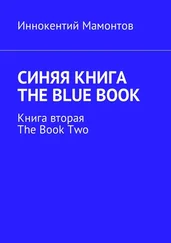Jonathan Rabb - The Book of Q
Здесь есть возможность читать онлайн «Jonathan Rabb - The Book of Q» весь текст электронной книги совершенно бесплатно (целиком полную версию без сокращений). В некоторых случаях можно слушать аудио, скачать через торрент в формате fb2 и присутствует краткое содержание. Жанр: Триллер, на английском языке. Описание произведения, (предисловие) а так же отзывы посетителей доступны на портале библиотеки ЛибКат.
- Название:The Book of Q
- Автор:
- Жанр:
- Год:неизвестен
- ISBN:нет данных
- Рейтинг книги:5 / 5. Голосов: 1
-
Избранное:Добавить в избранное
- Отзывы:
-
Ваша оценка:
- 100
- 1
- 2
- 3
- 4
- 5
The Book of Q: краткое содержание, описание и аннотация
Предлагаем к чтению аннотацию, описание, краткое содержание или предисловие (зависит от того, что написал сам автор книги «The Book of Q»). Если вы не нашли необходимую информацию о книге — напишите в комментариях, мы постараемся отыскать её.
The Book of Q — читать онлайн бесплатно полную книгу (весь текст) целиком
Ниже представлен текст книги, разбитый по страницам. Система сохранения места последней прочитанной страницы, позволяет с удобством читать онлайн бесплатно книгу «The Book of Q», без необходимости каждый раз заново искать на чём Вы остановились. Поставьте закладку, и сможете в любой момент перейти на страницу, на которой закончили чтение.
Интервал:
Закладка:
“Right,” said Pearse hesitantly. “Actually, the Manichaeans might not be the only ones traveling in darkness here.”
“What?” She looked up, clearly having been listening with only half an ear.
He smiled. “I think I missed class that day.”
“Oh … I would have thought with Ambrose, you would have-” She cut herself off. “Or maybe not.” She smiled, the teacher trying to find the right words. “I suppose it’s all rather … obscure, isn’t it?”
“A little earlier than my period, that’s all.”
“Always a good excuse.”
“Then I guess I’ll stick with it.”
“Fair enough”-a cigarette back in her fingers-“No reason you should be familiar with any of this.” She looked up at him, the smile in her eyes growing to a twinkle. “Well, is it to be the introductory lecture, or just the highlights, Father?” Once again, she left him no time to answer. “I suspect just the highlights.”
She stepped away from the glass, turned, and sat on the lip of the desk. “Let’s see,” she began, taking a long drag, gesticulating with the cigarette to emphasize each point. “Dating. … John is written sometime in the first or second century, so it’s a contemporary of the canonical Gospels; it’s a Gnostic tract and therefore a threat to what would become orthodox Catholicism; it recasts the Genesis myth with God as a mother-cum-father entity prior to the God of the Hebrew Bible. …” Another long draw on the cigarette, her eyes now searching the air, the delivery no less staccato. “It focuses on self-knowledge and condemns the institutionalization of faith; it’s supposedly written by one of Jesus’ original disciples-John, the son of Zebedee-and purports to record the words of Christ Himself; and it’s done in the narrative style of what was called an ‘apocryphal act of the apostles,’ a sort of Christianized novel.” One last puff before she turned to crush the butt into the ashtray, speaking as she drove the cigarette deeper into the ash. “The poem is simply one section of the book, an explanation of how one might be able to achieve deliverance by reclaiming uncontaminated, or perfect, light.” She looked up. “So there you have a link to the Manichaean prayer. A tenuous one, but a link.”
Still trying to piece everything together, he asked, “And all of that makes John and its poem a typical Gnostic tract?”
“On a very fundamental level,” she replied, “yes. It’s one that conveys a secret knowledge-directly from Christ-which the initiated elite access in order to achieve an enlightened existence. Gnosticism at its most basic.”
Feeling a bit bolder, he added, “And once the four Gospels are canonized, it slips into obscurity, along with the rest of the Gnostic scriptures.”
“Well, shoved might be a better choice of words. Remember, at the end of the second century, the followers of Jesus-in all their myriad sects-were fighting for their lives. They needed to put up a unified front, rather difficult, given the number of gospels and apostolic letters making the rounds. Which meant internal debates among them ultimately amounted to a matter of survival, rather than theology.”
“Expedience over spirit.” Pearse nodded. “Kind of takes the sheen off of things, doesn’t it?”
“Reality has a way of doing that, yes,” she said.
“Glad to see you’re not sugarcoating it on my account.”
“Wouldn’t dream of it.”
He smiled. “I could hide all the ashtrays.”
Another little chuckle. “I have them in places you wouldn’t begin to think of.”
He started to respond, then thought better of it. “So they needed one interpretation to stand supreme against the common Roman enemy, is that it?”
“Yes … but not just an interpretation. The early Catholic church needed a structure that could bring the faithful together. Something to turn the ‘followers of Jesus’ into ‘Christians.’ The ‘Jesus movement’ into ‘Christianity.’ Gnosticism defied any kind of structure and therefore made its believers difficult to control. No control, no unified front. You see where I’m leading?”
“To the end of Gnosticism.”
“Exactly. Anti-Gnostic writings became one of the standards of the new orthodoxy, most famously from the pen of the Bishop of Lyons, a man named Irenaeus. He wrote several books. …” She stopped for a moment, her eyes again searching the air. “What was the big one? The Overthrow? The Destruction? Something about ‘false knowledge.’” She looked back at him. “Whatever it was. It condemned all Gnostic gospels as heresy, and in so doing, helped to root out any internal squabbling. You had a common front.” She seemed to have expected a bigger response from him; he obliged with an exaggerated nod.
“Thank you. At the same time, though,” she continued, “that standard asserted an image of Christ that may very well have been different from the figure of Jesus His earliest followers had known. A shift. We, of course, will never really know.”
“A different image of Christ?” For the first time, Pearse responded not as student. “I’m not sure I understand that.”
Angeli smiled. “I don’t mean to make you uncomfortable, Father.”
“Yes, you do.” He smiled. “What shift?”
“Oh, I didn’t say there was a shift. I said there might have been a shift. No one’s absolutely certain how people understood Jesus in those first few centuries. Too many versions of the Word floating around. There’s Paul, the Gospels, the Gnostics, any number of Jesus sects-”
“Right, right,” he cut in. “But there has to be a way to distinguish Catholic orthodoxy from Gnosticism? One Christ from another?”
“Naturally. We’re just not sure which one is the authentic Christ.”
“I understand. But the differences-”
“Are there. Yes.” Evidently, this part of the discussion required a fresh cigarette. She fished through her pocket and produced yet one more from a seemingly endless supply. “I say all of this purely as an academic, Father, sugarcoating or not. As a Catholic-”
“Don’t worry, you’re absolved.”
Angeli returned the smile, then lit up before diving back in. “Well then, two basic distinctions separate an orthodox and a Gnostic image of Christ. First, orthodox Catholics view God as a completely separate entity. Primal Other. We can venerate Him, attempt to mirror His life and piety, but we can never achieve a synthesis with Him. The Gnostics, on the other hand, claim that self-knowledge-the highest form of attainment-is actually knowledge of God. So, self and Divine become identical at a certain point of self-awareness.”
“That’s sounds like a very Eastern view of spiritual growth,” he said.
“On some level, it is.”
“And the second point?”
“Also somewhat Eastern. And politically far more explosive. For orthodox Christians, the ‘living Jesus’ speaks of sin and repentance. At His core, Christ is Savior, hence the need for His death, our sins, and His Resurrection. And that Resurrection is a literal one, confirmed by Peter. Without that doctrine, without Peter standing there saying, ‘I was the first, I can vouch for His return, He gave me the keys and told me to tend to the sheep, and so forth and so on,’ there’s no need to have a group of men-the leaders of the church-sustaining that confirmation. In other words, without the doctrine of bodily resurrection, there’s no way to validate the apostolic succession of bishops. No way to lay claim to the papacy.”
“That’s a little troubling, isn’t it?”
“You might say that. For Gnostics, on the other hand, Jesus speaks of illusion and enlightenment. They reject a literal Resurrection altogether. So Christ becomes guide. Once again, a dramatic shift in the relationship occurs when the disciple achieves enlightenment. Jesus is no longer spiritual master. Instead, the two become equals through their knowledge. Self and Divine are identical. Hence, there’s no need for a resurrection or a papal authority, with its subsequent structure. Even the few Gnostic tracts that hint at a Resurrection have Jesus appearing to Mary Magdalene first, not Peter. Imagine what that would have done for the papal succession? Pretty powerful stuff.”
Читать дальшеИнтервал:
Закладка:
Похожие книги на «The Book of Q»
Представляем Вашему вниманию похожие книги на «The Book of Q» списком для выбора. Мы отобрали схожую по названию и смыслу литературу в надежде предоставить читателям больше вариантов отыскать новые, интересные, ещё непрочитанные произведения.
Обсуждение, отзывы о книге «The Book of Q» и просто собственные мнения читателей. Оставьте ваши комментарии, напишите, что Вы думаете о произведении, его смысле или главных героях. Укажите что конкретно понравилось, а что нет, и почему Вы так считаете.










